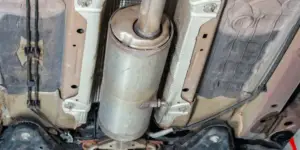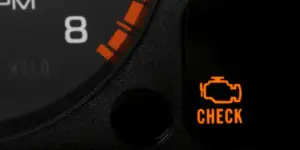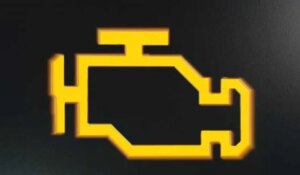In this article, we’ll examine if an oil change can help pass an emissions test and other actions you can take to increase the chances.
Before we get into details about the benefits of having the oil changed further on, I’ll explain what the emissions test is testing for.
What is an Emissions Test?
If your check engine light is on or your car is running poorly, your car will probably fail an emissions test. Many things can cause a car to fail the test.
This article will focus on how engine oil affects emissions.
When getting an emissions test, a scan tool will be hooked up to your car to communicate with the car’s computer to read this data. Depending on the year, make, and model of your car, there is a normal range into which these things should fall.
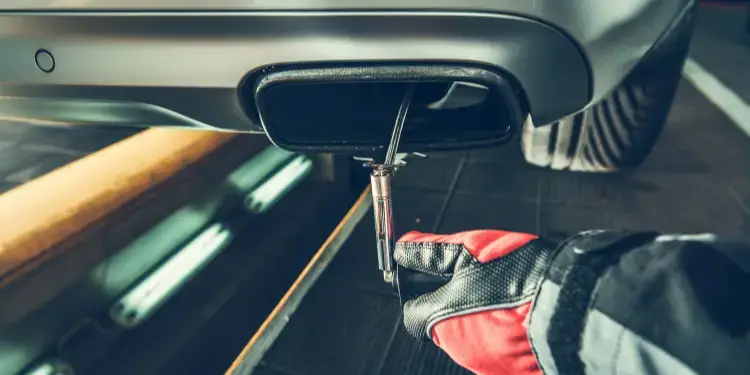
An emissions test will vary depending on where you live. In addition to scanning your car’s computer, they will probably visually inspect your engine, exhaust system, and fuel system.
The test looks for excess hydrocarbons, sulfur oxide, and carbon monoxide. All these are produced by the burning of bad oil or fuel.
Some states also hook up an exhaust gas analyzer to the tailpipe to measure the amount of exhaust and the chemicals in the gasses.
If all of your car’s systems are in that normal range, your car will pass that part of the test. If something is not within the normal range, it will need to be repaired before your car will pass.
Some fixes can be expensive, but a quick oil change may help. We’ll discuss this below.
Can Dirty Oil Affect The Emissions Test?
Old oil will cause the engine to run hotter and be more likely to burn oil, increasing the vehicle’s emissions. If the oil becomes contaminated with fuel, coolant, or something else, that too affects emissions.
Dirty oil can cause your engine not to run as efficiently. Most manufacturers recommend changing your oil every 3,000-5,000 miles.
Engine oil is designed to clean, cool, and lubricate a car’s engine.

If the oil is not changed at the recommended interval, it can start to break down and not work as it should.
What Type Of Oil Is Best To Pass The Test?
A good quality synthetic oil is the best option to help your engine run as efficiently as possible and lower emissions. Synthetic oil is more stable with temperature extremes and can improve fuel economy.
Synthetic also lasts longer than conventional motor oil, so that you can go further between oil changes.
Auto manufacturers will recommend the viscosity of motor oil your car should have, for example, 10W-30. So whatever brand oil you choose and whether it’s synthetic or conventional, you should use the recommended viscosity.
The manufacturer makes their recommendation based on what makes the engine run most efficiently. As we’ve discussed, an efficient engine will run smoother and burn less oil resulting in fewer emissions.
How Long After Changing Oil Should You Wait Before Testing And Why?
After you change your oil, just let the engine get up to normal operating temperature before the test. There is no need to drive a certain number of miles.
Most testing centers will run the car up to temperature before performing the test but I always like to get the engine hot and working its best before the test just in case they don’t, for some reason.
A 10-minute drive is enough to get the car up to operating temperature.
If other repairs were made, it may be necessary to put up to a few hundred miles on the car to give the car’s computer time to adjust to the changes.
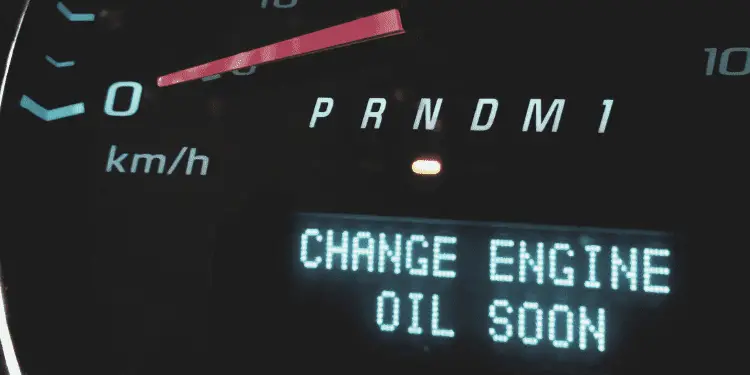
Is There A Cleaner Available That Will Reduce Emissions?
There are several oil and fuel additives on the market. These can help pass an emissions test because some are designed to remove carbon buildup in the engine. On higher mileage engines, carbon can build up, causing the car’s fuel economy and performance to decrease and harmful emissions out of the exhaust to increase.
Using additives in the fuel system and engine oil can help to reduce this carbon buildup. Using these additives, it’s best to drive your car for at least a few hundred miles before going in for the test to give them time to work.
These additives won’t always work in severe cases but are often worth spending a few dollars to discover and save money on an oil flush and refill.
What Other Cheap Changes/ Tweaks Can Be Done?
In addition to changing the engine oil and filter and using an oil additive and fuel additive to reduce carbon buildup, there are a few other cheap, easy things you can do to be more likely to pass an emissions test.
Replace the Air Filter.
Making sure airflow into the engine is not restricted at all will increase efficiency and reduce emissions. The car engine requires the right mix of air and fuel to burn efficiently. The air filter should usually be replaced yearly, so doing this before your emissions test would be a good time.
Check Spark Plugs.
If the spark plugs are old and worn out, they will not produce as hot of a spark, resulting in the fuel in the engine’s combustion chamber not being burned completely.
Check the Fuel Filter.
A clogged fuel filter can cause the engine to run poorly. Look to see how often the manufacturer recommends replacing the fuel filter and when the last time it was changed on your car was. If it’s due, replace it before getting your car tested.
Check the Fuel Cap.
Make sure the fuel cap seals properly and is installed all the way. A loose or leaking fuel cap can cause the check engine light to come on and cause the car to fail an emissions test.
Check the PCV Valve.
The PCV valve or positive crankcase ventilation valve opens and closes to allow pressure from the crankcase and oil vapors to enter the intake manifold. If this valve is stuck open or closed, it can cause the check engine light to come on.
Conclusion
Engine oil is the fluid that lubricates, cools, cleans, and shields your engine from wear and damage. Regular oil changes will keep your engine running efficiently, reduce emissions from your vehicle, and help it pass any emissions test.
When going in for an emissions test, ensure the engine is fully up to temperature. When the engine is cold, the computer adjusts the air/fuel ratio so it will run smoothly while warming up. During this time, the engine is not running as efficiently as when it is up to normal operating temperature.
If the check engine light is on for any reason, that will usually cause the car to fail an emissions test. If your check engine light is on, have the problem diagnosed and repaired first.
Following the manufacturer’s recommended service schedule is the best practice to keep your car running efficiently. In the long run, it’s cheaper to perform regular preventative maintenance than to firefight issues before an emissions test or if your car has failed it.



